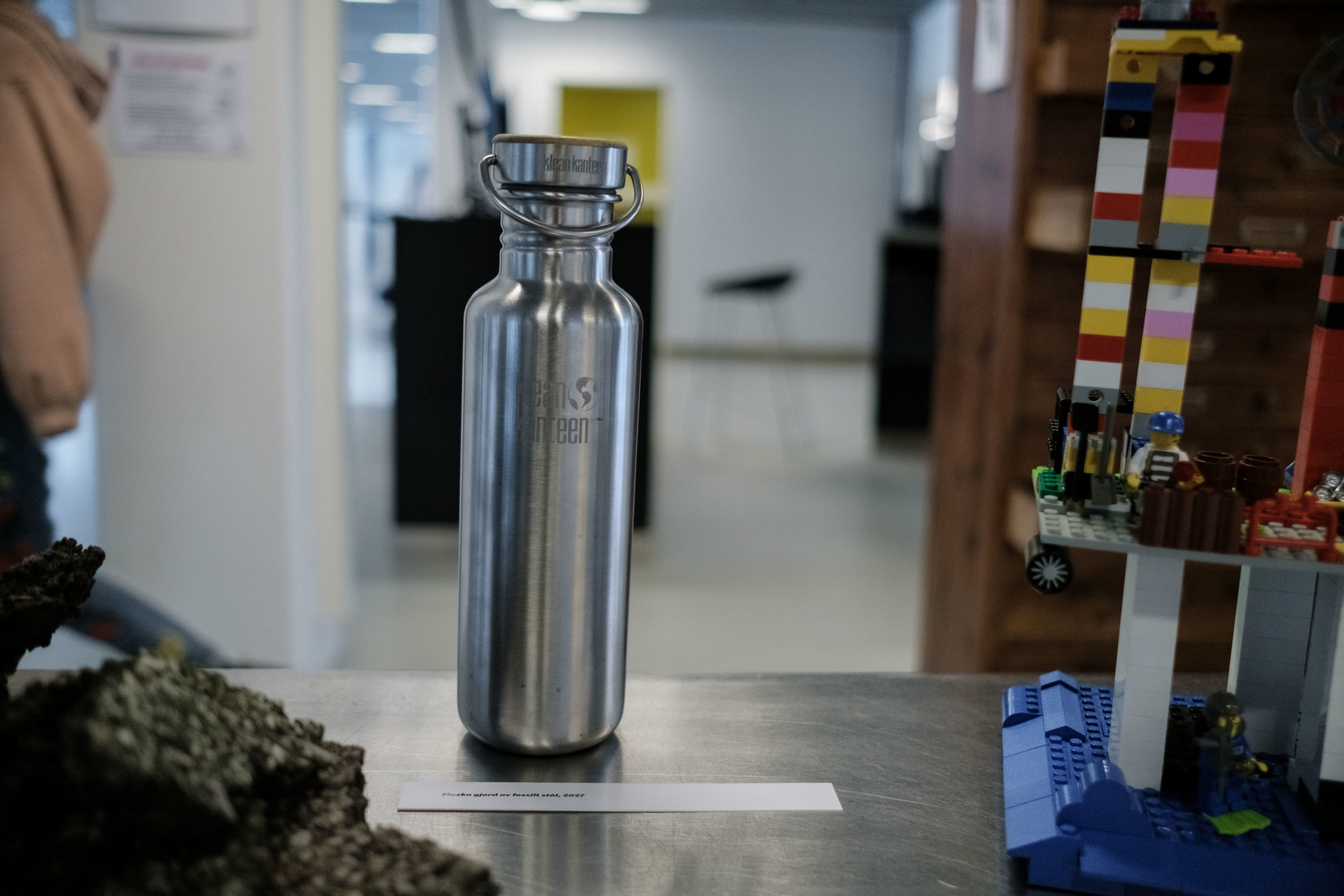Oil platform made of LEGO bricks, built by an 8-year-old girl
Here we see an oil-platform built from vintage, oil-based LEGO-bricks. In a sense, oil-drilling was seen as a great job prospect for young people – especially in countries such as Norway and Nigeria with vast oil reserves. And the fossil fuel industry wanted to keep it that way – which is why they often partnered with LEGO to produce models of oil wells, ‘get them while they’re young as you say’.
The ‘oilyness’ of LEGO became controversial. Protests where held outside LEGO where oil dripped onto the hands of children, clothed in white. I mean, how could one buy new oil bricks and put them in the hands of kids? What an historical irony that there was a direct linkage from the refineries, the petrochemical complexes, the oil-pipelies all the way into the kids rooms.
Bottle made from fossil steel, 2027
In the 2010s bottles made from steel became very popular when people wanted to replace their old plastic bottles. This bottle is actually from that time. During the steel shortage in the 2030s many of these bottles were collected for recycling. Steel turned into a more valuable material since it was needed for infrastructure, wind mills and electric vehicles made of light-weight steel. Now, with hydrogen steel-making mills opening all over the world we might see a revival of these bottles, who knows?
Asphalt from Lund, 2019
Asphalt (bitumen) is a sticky, black and highly viscous liquid or semi-solid form used as a durable surface material since the 1920 on roads and in urban environments. Until the mid 2030s it was produced from petroleum, but eventually lignin came to replace bitumen as the binder.
Construction element, reinforced concrete, 2036
The high rise buildings of major cities around the world depended on this construction method because of its high strength. For a long time, concrete production was the single largest emitter of carbon dioxide.
The fast-food hamburger
It was the epitome of the ‘energy glut’: fast, cheap & delicious. As critique grew of industrial meat, the slice of protein shifted, first to plants & legumes, then to in vitro meat. But there was no saving it, displayed before you is the last fast-food burger ever served in 2038. People still put slices of protein between buns - but golden arches and burger royalties are no more. Preserved and donated by Tobias Linné
The In Vitro Meat Cook Book, Koert van Mensvoort, Hendrik-Jan Grievink, BIS Publishers B.V., Amsterdam 2014
Meat grown from biopsied cells were first developed in the 10s but were met with skepticism and confusion by the public. In an attempt to capture the prospects of this novel technology, a Dutch team developed this cookbook – recipes such as painless foie gras and magic meatballs are now commonplace, while in vitro kebab was violently rejected by consumers (sometimes, we don’t want to see how the sausage is made).






